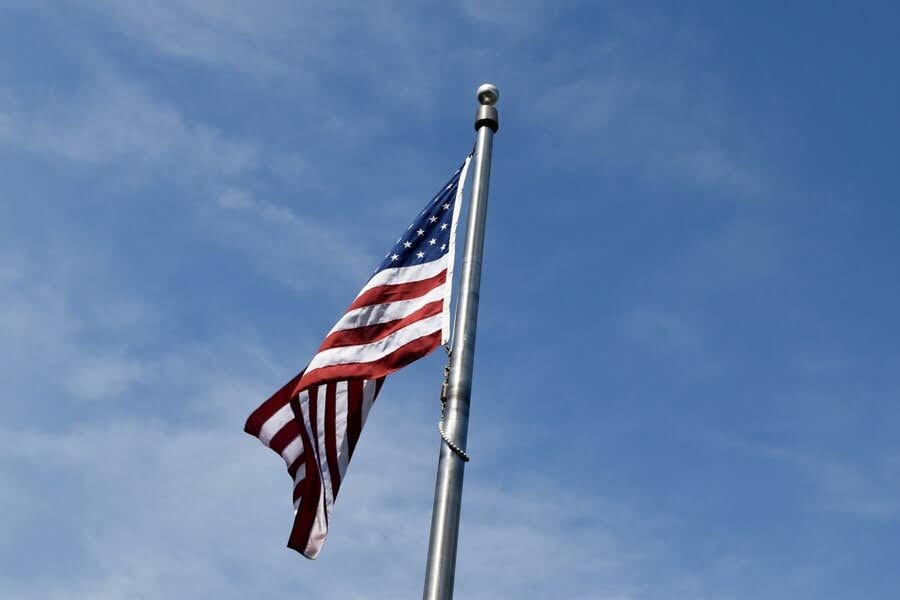
When it comes to enhancing the visibility of your business or organisation, few symbols are as powerful and dignified as a flag flying high on a commercial flagpole. Whether it’s your national flag, a company banner, or a custom design that represents your brand, the sight of a well-installed flagpole can create an immediate impact. However, installing a flagpole is no small task. It requires careful planning, the right tools, and knowledge of the proper techniques to ensure that it stands tall and strong for years to come. In this guide, we’ll walk you through everything you need to know about commercial flagpole installation, from choosing the right location to ongoing maintenance.
Before you dive into the installation process, it’s important to assess whether you need to hire professionals for the job. Flag pole installation may seem straightforward, but there are various factors to consider, such as the size of the pole, the type of foundation required, and local regulations that might affect the process.
Hiring a flag pole service can save you time and ensure that the job is done correctly. Professionals have the experience and equipment necessary to handle larger poles and more complex installations. They can also advise on the best materials and techniques to use, ensuring your flagpole remains secure and functional in all weather conditions. If your project involves installing a very tall or heavy flagpole, professional assistance is highly recommended.
On the other hand, if you’re confident in your abilities and the pole in question isn’t too large or heavy, a DIY installation is possible. Just be sure to follow all the necessary steps meticulously to avoid future issues.
Choosing the right location for your flagpole is crucial to both its functionality and visual impact. The location should be prominent and easily visible from key vantage points, such as the main road or the entrance to your building. However, visibility isn’t the only factor to consider.
You must also take into account the surrounding environment. Avoid placing the flagpole too close to trees, power lines, or buildings, as these could obstruct the flag or pose a hazard during storms. It’s also essential to consider the wind patterns in your area; placing the flagpole in a spot with consistent wind can ensure that your flag flies proudly, rather than hanging limp.
Additionally, local regulations may dictate where you can place a flagpole. Some areas have restrictions on the height or location of flagpoles, especially in residential or protected zones. Be sure to check with your local council or planning department before you begin the installation process.

Once you’ve selected the perfect spot for your commercial flagpole installation, the next step is gathering all the necessary equipment and tools. This stage is critical; having the right gear will make the process smoother and help you avoid potential pitfalls.
The essential tools and materials you’ll need include:
For a smooth installation, it’s also advisable to have a few helping hands. Installing a flagpole is not a one-person job, particularly if the pole is tall or heavy.
The foundation is the most critical part of the flag pole installation process. A solid foundation ensures that the flagpole remains stable and can withstand strong winds and other environmental stresses.
Begin by digging a hole at the selected location. The size of the hole will depend on the height of the pole; a general rule of thumb is to make the hole one-third the length of the flagpole. For instance, if you’re installing a 30-foot flagpole, the hole should be about 10 feet deep.
Next, prepare the concrete mix according to the manufacturer’s instructions. Pour the concrete into the hole, ensuring it’s evenly distributed. Before the concrete sets, insert the ground sleeve (a metal tube that will hold the base of the flagpole) into the centre of the hole. Use a level to ensure the sleeve is perfectly vertical.
Allow the concrete to cure for at least 24 hours. This curing time is essential to ensure the foundation is strong enough to support the weight of the flagpole.
Once the foundation is ready, it’s time to assemble the flagpole sections. Most commercial flagpoles come in multiple sections that need to be joined together. Follow the manufacturer’s instructions carefully to ensure each section is securely connected.
After assembling the pole, it’s time to raise it. Depending on the height and weight of the pole, you may need specialised equipment, such as a winch or crane, to lift it into place. This step requires precision and teamwork, as the pole must be carefully guided into the ground sleeve while being kept perfectly vertical.
Once the pole is in place, secure it using the bolts or screws provided in the kit. Double-check that the pole is straight using a level, and make any necessary adjustments before tightening the bolts completely.

With the pole now standing, you’re almost done with the installation. However, there are a few final steps to ensure everything is in order. Start by attaching the halyard to the truck (the pulley system at the top of the pole). Feed the halyard through the truck, making sure it moves smoothly without any snags.
Next, tie the halyard to the cleats (the hooks on the side of the pole) and test the system by raising and lowering the flag a few times. This will ensure that everything functions properly and that the flag can be easily hoisted and lowered when needed.
Finally, if you’re installing a permanent flagpole, you might want to consider adding additional features such as a flag pole painting service to protect the metal from corrosion and maintain its appearance. A fresh coat of paint can also enhance the aesthetic appeal of the pole, ensuring it complements the overall look of your property.
Proper maintenance is essential to prolong the life of your flag pole and keep it looking its best. Regular maintenance includes inspecting the pole and its components for signs of wear and tear, such as rust, loose bolts, or frayed halyards.
Flag pole maintenance should also include routine cleaning to remove dirt, bird droppings, and other debris that can accumulate over time. If your flagpole is painted, inspect the paint regularly and touch up any areas where it has chipped or faded. This is where flag pole painting services can be particularly valuable, as they can provide a professional finish that will last longer and protect the pole from the elements.
Additionally, it’s important to regularly check the condition of the flag itself. Flags can become tattered or faded due to exposure to the elements, and a worn-out flag can detract from the overall appearance of your flagpole. Make it a point to replace the flag when necessary to keep your display looking dignified and respectful.
Installing a commercial flagpole is a significant investment in both time and resources, but when done correctly, it can provide a striking and symbolic feature for your business or organisation. By carefully selecting the location, using the right tools and techniques, and committing to ongoing maintenance, you can ensure that your flagpole stands tall and proud for many years to come.
Whether you choose to handle the installation yourself or hire a flag pole service, the key is to approach the project with attention to detail and a commitment to quality. With the right planning and execution, your flagpole will not only be a functional addition to your property but also a powerful statement of identity and pride.
Mon-Fri 07:00–17:00
Sat 07:00–13:00
Sun Closed
Copyright © 2025 New England’s Best Flags. All Rights Reserved.